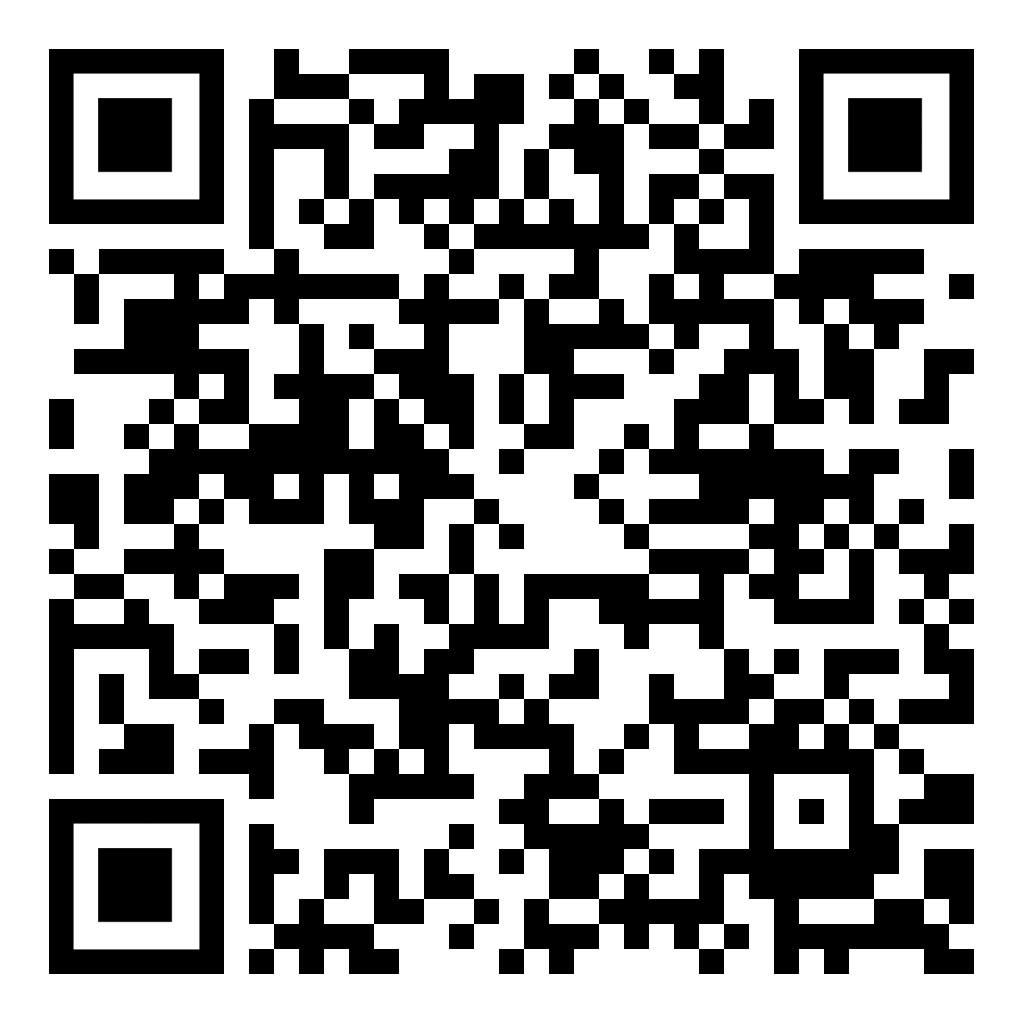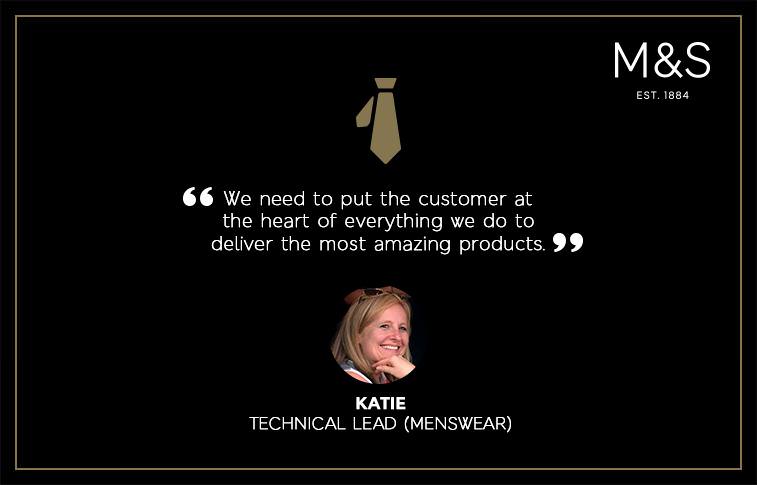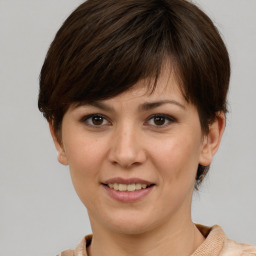Introduction
Leaders are responsible for the growth and development of the team members and organisation as well. They hold the main key to raising the level and success of innovation in companies. Innovation does not happen daily and it is not possible to innovate and create new ideas without the active commitment and involvement of the leaders and their team members. The proposed essay is based on Marks & Spencer (M&S). It focuses on the contribution of the leaders to increasing the level of innovation. This file includes background information on the applications of leadership and teamwork in innovations. In the end, the conclusion is explained with the key findings.

Background
Innovation
According to Chuang, Jason and Morgan, 2011, "Innovation leadership helps leaders in influencing their team members to develop creative ideas, products or services. With the change in time and technologies, it is need of companies to think and work innovative" (Chuang, Jason and Morgan, 2011). Similarly, Collinson and Cook, 2013, have stated that “Firms can achieve their requirement of innovations by focusing on their leaders for shaping the nature and success of the creative and innovative efforts. Without appropriate innovations and creations an organisation is considered in a struggling period” (Collinson and Cook, 2013).
As per the view of Termeer and Nooteboom, 2012, "Innovation refers to a kind of change in the organisations which affect the creation and delivery of its products and services. Along with this, it also results in changes in the organisational structure, policies and methods" (Termeer and Nooteboom, 2012). On the other hand Lee, Hwang and Choi, 2012, have explained that "There are two types of innovations which include incremental and radical innovations. Small changes are involved in the incremental innovations which lead to developing products with the help of existing knowledge and capabilities whereas radical innovations are fundamental changes which result in the use of new techniques, ideas, etc for creating new products or services" (Lee, Hwang and Choi, 2012).
With respect to value-added innovations Edelman and et.al., 2011, have said that "Value-added or incremental innovations needed transactional leadership as it does not use any type of open leadership behaviour which includes motivating workers to do experiments, taking risks, etc" (Edelman and et.al., 2011.). Companies like General Motors Corp., Ford Motor Co., etc use this style for value-added innovations. These firms make improvements in the current and existing vehicles or care for making them more comfortable, attractive and faster. In contrast, Fullan, 2011, has argued that "Sometimes organisations use value-added innovations for new ideas, thinking and taking risks. In such conditions, leaders need to change their leadership style and encourage their team members to think out of the box" (Fullan, 2011). For example, Aspirin used this style to introduce its existing product into a new and different market by expanding its uses and benefits.
In contrast to the above innovation type Hong-sheng, 2012, has explained that “Exploratory or radical innovations are for creative new ideas, strategies and solutions for achieving the organisational goals in more effective manner. The basis of this innovation style is proper search, analysis, discovery, experiments and risks” (Hong-sheng, 2012). With respect to the leadership style Kastelle, 2011, has declared that “Leadership style possessed by the leaders for exploratory innovations is a transformational style which motivates team members to achieve the outcomes with creativity and innovations” (Kastelle, 2011). With reference to this statement M&S, uses this style for working together in a creative and innovative way which results in 150 new business ideas for the production of the products or services.
Innovation Process
Sergeevna, 2014, has asserted that “There are four steps of a normal innovation process which includes scanning of the environment for determining the opportunities, selection of those options which are most likely to develop a competitive edge, resourcing of the options and implementation of the innovation” (Sergeevna, 2014.). With respect to the first step Dearing, 2015, has stated that “Large organisations generally ignore the first step of the innovation process. They like to spend more time on their resources for creating existing products as per the existing technology and customer needs” (Dearing, 2015).
In contrast Willis and Mastrofski, 2011, have said that “Those companies which use incremental innovation, find themselves at a dead end during the market changes with customer needs and expectations” (Willis and Mastrofski, 2011). In favour to these statements, the innovation process helps leaders of M&S to achieve their objectives effectively for developing new goods, services, processes or methods for their company. It is essential to follow the whole process effectively with proper analysis and evaluation then it leads to give expected outcomes regarding innovations and creativity.

Get an Extra 5% OFF On Your Order in Our App

Scan the QR code with your mobile to unlock an exclusive offer!
Download App Now Scan me
Scan meRole of leaders in innovation
According to Hammond and et.al., 2011, “Most of the innovation activities take place among the team members under the guidance and monitoring of the leaders. There lies a strong relationship between innovations and leadership which results in achieving the objectives of the enterprise in an effective and efficient manner. ” (Hammond and et.al., 2011). In favour of this Wang and et.al., 2011, have concluded that “Leaders are capable enough to provide essential and necessary facilities which allow flourishing the innovations and creativity within the working environment” (Wang and et.al., 2011). On the other hand, Vaccaro and et.al., 2012, have demonstrated that “Two roles are played by the leaders for managing the innovations among the team members and individuals. The first role is to create a favourable environment and various opportunities for creating innovations and the second is to embody the company's desire to be innovative and creative” (Vaccaro and et.al., 2012). With respect to this statement, leaders can develop and support a positive team climate which results in solving problems and managing diverse teams.
In contrast to the above Rosenblum and Louis, 2013, have declared that “Leaders can enhance the intrinsic motivation of the workers and can establish a high-quality work with their cooperation and coordination. In this, leaders use a bottom-up approach which makes team members develop innovative ideas and views” (Rosenblum and Louis, 2013). In favour of this, leaders need to allocate and utilise the resources which include time, money, skills, knowledge, facilities, etc properly and effectively. Along with this, they should set individual and team goals and coordinate them to achieve innovative outcomes. Along with these statements West, 2012, has asserted that “Leader supports their team and other individuals for turning their creative ideas and efforts into innovation and also manage objectives and goals of the firm by using innovations and creativity ” (West, 2012.).
According to Yukl, 2012, “Innovative leaders possess some qualities which involve modest intelligence, well informed, original thinkers, encourage team members to think innovative and creative, motivates them to take risk and to find appropriate solutions, etc. All these qualities help the employees in developing their skills and knowledge such as problem-solving, decision-making, risk-taking, innovative thinking skills, etc. This results in enhanced career and growth opportunities for the workers” (Yukl, 2012.). With respect to this statement, innovations need particular kinds of leaders and team members who should be passionate explorers in search of endless possibilities. These workers are courageous enough to take risks and challenges to get some new ideas under the guidance of a leader. For example, Elon Musk, the founder of SpaceX and Tesla Motors is one of the innovative leaders who reinvented the aerospace and automotive companies with the help of innovations and creativity.
Along with this Xue, Bradley and Liang, 2011, have stated that “Innovation is only possible when an organisation have an innovative and creative leader with a tea, who has a pulse on the marketplace. Some companies only waste their time understanding and knowing the innovations taking place in the market whereas some firms take required and appropriate actions by investing in employees and resources for bringing innovative ideas” (Xue, Bradley and Liang, 2011). In favour of this statement, the best and most innovative leaders of M&S know that innovations are only possible due to internal and external sources. They merge different ideas, perceptions, opinions and experiences of the team members to create new kinds of innovation which are not used by anybody else before.
According to the Chuang, Jason and Morgan, 2011, “With the change in time and technology, innovations and creativity are also rising. Companies are increasing their level of innovation to gain competitive advantages and leading market positions. Leaders play an essential role in enhancing the level of innovations by encouraging their team members” (Chuang, Jason and Morgan, 2011). On the other hand, Collinson and Cook, 2013, have said that “Leaders need to use leadership theories, organisational, workgroup and supervisory encouragement, autonomy, proper resources, creative environment, etc results to enhance the level of innovations among the employees for achieving the organisational goals ” (Collinson and Cook, 2013). As per this statement, leaders of M&S can enhance the level of innovation by encouraging and motivating their team members from time to time. Along with it, they need to provide various resources and facilities to the workers so that, they can give their best for thinking differently.
Exam prep Techniques guide PDF UK
Applications
Team Formation
While forming the team of Marks & Spencer (M&S), a leader needs to think over the following points for increasing the level of innovation in the organisation.
Team Composition: In M&S a team consists of two types of diversity which are job-relevant diversity and background diversity. Job-relevant diversity relates to the different skills, education, knowledge, competencies, etc of the workers whereas background diversity relates to the different ages, gender, beliefs, ethnicity, etc of the employees (Lee, Hwang and Choi, 2012). With respect to this, job-relevant diversity effect positively on innovations as it results in sharing information on different subjects with different perceptions and backgrounds diversity impacts negatively as it sometimes impedes communication which raises the risk of conflicts, grievances and misunderstandings. So the leader of the organisation needs to take care of all these points while composing his/her team so that they can contribute to each other in getting innovative results. An effective team composition can make leaders enhance the level of innovations in M&S. (Termeer and Nooteboom, 2012).
Team Size: Team size plays an essential role in increasing the innovations at M&S. Large size team results in the sharing of more information, views, perceptions, etc which helps them to work on difficult innovative tasks but there are some disadvantages also as large size of team results to create more conflicts, social loafing, free riding, etc. On the other hand, the small size of the team leads to restricting the exchange of ideas and information but it reduces the chances of conflicts or misunderstandings. While forming a team in the organisation, it is important for the leader to select team size as per the requirement and work. The proper decision/can make workers to give their more effort into the innovations (Kastelle, 2011).
Team Climate: The climate of the team in M&S is positive and cooperative which makes team members work effectively to achieve their targets. Various factors with respect to the team climate are connected with the innovations. The environment of the team is formed by the psychologies of the team members so, the leader changes the view and perception to develop a positive atmosphere (Seelos and Mair, 2012). In such cases, employees cooperate, coordinate, discuss the information, communicate from time to time to handle the risk and enjoy their work which results in an improved and increased level of innovation in the organisation. For example, M&S provides a positive, open and friendly environment to its workers so that, they can give their best for new innovations. Along with this, their leaders are talented, skilled and intelligent and make their team members think outside of the box (Dearing, 2015).
Team Communication: On the other hand, the exchange of information also plays an essential role in forming a positive and friendly environment for M&S. With the help of internal and external communication, the leader enhances the interaction which results in the development of new skills, abilities and knowledge among the workers and this helps them in thinking innovative (Edelman and et.al., 2011).
Task Orientation: Teams of M&S have a high degree of task orientation which makes team members think about the processes and strategies and it results in the creation new innovations with respect to customer services and products. Leaders of the firm develop decision-making skills in the workers so that they can make appropriate decisions for enhancing the level of innovation. Along with this, leaders delegate proper work as per the skills and knowledge of the employees so that, they can effectively use their abilities and strengths to make the enterprise more popular among the customers (Yukl, 2012).

Vision: The leader should explain the purpose and importance of the company's goal effectively to the team members to get proper contribution and active participation. Proper vision leads team members of M&S to give their best to resolve issues and finish their tasks efficiently. With the help of effective and good communication and task-oriented guidance, leaders monitor their worker's work properly and help them to work innovatively and creatively (Xue, Bradley and Liang, 2011).
Intrinsic Motivation: Motivation encourages employees to develop themselves to improve their work performance and enhance their career opportunities. By using intrinsic motivation, leaders of M&S enhance the performance of their team members by encouraging them to take risks and challenges. This results in to rise in the creativity and self-efficiency of the workers which makes them think of something new and innovative (Fullan, 2011).
Task Characteristics: It includes job complexity, work autonomy, creativity expectations and individual innovations. Project leaders of the organisation gives permission to their workers to use their discretion which results to increase the generation and implementation of ideas and strategies. Skills and creativity of the team members of the firm develop while handling challenges and hard tasks which is only possible due to intrinsic motivation. Leaders of M&S can give some complex work to the employees so that they can give more attention to it, try some new alternatives and find innovative and creative results (Hong-sheng, 2012).
Leadership Theories
The leader of M&S should apply the following leadership theories to encourage his/her team members to work effectively with innovations.
Path-Goal Theory: This theory is based on the use of different leadership styles to increase the level of innovation. The use of different leadership behaviours by a single leader results in developing creations in the working environment with innovative thinking. For generating new ideas, processes and strategies, this theory helps the leader to monitor their employees and to behave as per the situation and requirement of the work. The influence of the behaviour of leaders makes team leaders think creatively, generate novel and implement their ideas (Rosenblum and Louis, 2013).
Leader-Member Exchange Theory (LMX Theory): This theory makes leaders use a unique leadership style for each team worker. It impacts positively on the innovations and creativity of the employees of the organisation. This will lead the leader of M&S to predict the significant organisational and attitudinal variables which include higher job satisfaction with performance. In this, high-quality exchange i.e. contribution of both leader and team members results in enhancing the level of innovations by generating new ideas. In this, low-quality LMX is related to the formal and impersonal relations between the leader and their team member whereas high-quality LMX refers to mutual trust, respect, influence and motivation (Wang and et.al., 2011).
By the use of both theories, leaders of M&S can motivate and encourage his/her employees to think differently and uniquely to make their work more effective and appreciable.
Ways for influencing Team members:
The leader of the company needs to influence his/her team members from time to time so that they can give their best to generate new and different ideas.
Creative Problem Solving: Innovative work is always new for the employees which creates complexity in understanding them. The leader of the firm needs to be a problem solver so that he/she can guide appropriately to their team members (Amabile and Khaire, 2008). Leaders can assist their employees in structuring the problem, determining the goals, strategies, processes and collection of suitable data for understanding that problem. Complex tasks make team members to spend more time with the problems which results in generating some new and different ideas. By using domain-related knowledge, leaders can guide their employees of the organisation so that they can reach a particular goal or result (Sergeevna, 2014).
Support: It is one of the essential features required by the team members for success in their work. Leaders promote the innovative work of their employees by recognising their teamwork, supporting them emotionally, involving them in the decision-making process and monitoring their work with honesty and fairness. Less support from leaders results in ineffective work, and failure to achieve objectives and resolve the problems (Hammond and et.al., 2011).
Intellectual Development: By proper monitoring, leaders of M&S can guide their team members in selecting appropriate techniques and ideas for achieving the objectives and solving the problems. Under the proper guidance, they can develop decision-making, problem-solving, risk-taking, communication, team management, time management, etc skills of the employees. This development results in enhanced career opportunities and raises the job satisfaction level of the workers. The contribution of knowledge and ideas also helps in the development of the team members (West, 2012).
Behaviour of the Leader: Sharing of ideas, time-to-time interaction with the team members, formal and informal meetings, recognition and rewards for good work, feedback, etc helps leaders to make good relationships with their employees (Llopis, 2014). Allowing workers to do their work with full independence and providing help whenever needed results in developing innovative ideas. The behaviour of the leader should be positive, friendly and open so that, team members can easily share their problems with them. It also results in the development of trust, loyalty and honesty for M&S which makes the bond more strong and encourage workers to give their best to accomplish the company's objectives in different manners (Yukl, 2012).
By using all the above features, a leader can influence his/her team members to think differently. These features will also help leaders in enhancing the level of innovations. Proper guidance and monitoring of the leaders can lead to the development of creative skills among the workers which will help them think out of the box and something new which is not used by anyone else before.
Conclusion
From the above study, it is concluded that innovations are a form of change and it is important for M&S to implement this change to get brand recognition and a leading market position. Leaders play an essential role in making team members of the organisation think differently, generate new ideas and implement them to get innovative results. By following the factors regarding team formation, leaders can encourage their workers to think out of the box. On the other hand, leaders need to influence their team members to make them work innovatively and creatively.
Expert Nursing Assignment Help for Top Grades and Stress-Free Academic Success
References
- Chuang, E., Jason, K. and Morgan, J.C., 2011. Implementing complex innovations: Factors influencing middle manager support. Health care management review.
- Collinson, V. and Cook, T.F., 2013. Organizational Learning: Leading Innovations. International Journal of Educational Leadership and Management.
- Dearing, J.W., 2015. Joining Evidence-based Innovations with Evidence-based Dissemination. Metropolitan Universities.
- Edelman, P., Holzer, H., Seleznow, E., Van Kleunen, A. and Watson, E., 2011. State workforce policy: Recent innovations and an uncertain future.Georgetown Center on Poverty, Inequality, and Public Policy, Washington, DC.
- Estrada, E. and Vargas-Estrada, E., 2013. How peer pressure shapes consensus, leadership, and innovations in social groups. Scientific reports, 3.
- Fullan, M., 2011. The six secrets of change: What the best leaders do to help their organizations survive and thrive. John Wiley & Sons.
- Hammond, M.M. and et.al., 2011. Predictors of individual-level innovation at work: A meta-analysis. Psychology of Aesthetics, Creativity, and the Arts.
- Hong-sheng, Y.U., 2012. The Innovations of Social Management: New Missions for the Leaders in the Era of Restructuction. Journal of China Executive Leadership Academy Pudong.1. p.027.
- Kastelle, T., 2011. Leaders Speak. What innovations mean to Business education. Fast Thinking.



 Company
Company


















